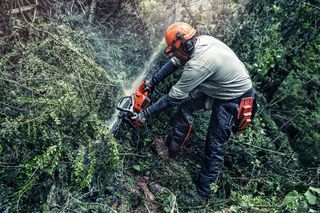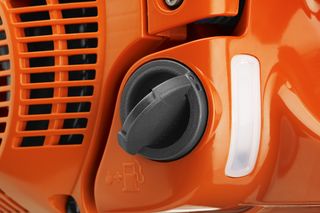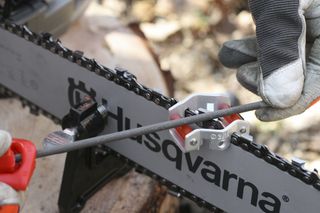
How-To's & Guides
Safe corner felling method
A catch (a piece of unsawn wood) is saved for one last operation before the tree is felled, hence the name “Safe corner”. A major advantage of this method is that the hinge can be clearly cut and inspected before the tree is felled. The tree cannot fall backwards either due to the corner. The method is also beneficial to use on moderately forward or backward leaning trees.
For tree diameters smaller than the guide bar length
- Start by making a bore (as shown in the section Cutting with bore). Saw through the trunk and complete the hinge width.
- Continue to saw backwards until 2/3rds of the trunk is sawn. Pull back the guide bar to create a 5–10 cm wide corner. Then continue sawing until you come through the tree. All that then remains is a corner of unsawn timber. The corner is roughly the same total area as the hinge.
- Drive a wedge in the saw cut straight from behind.
- Finally saw off the corner and the tree will fall.
For thinner tree trunks, saw the corner diagonally down to avoid the risk of cutting in the felling wedge. If the guide bar does not reach through the trunk, the corresponding cut must be made from the same side. For side leaning trees, the safe corner is positioned at the very back on the opposite side to the tree’s lean.
Tree diameter larger than the guide bar length
- Make a bore to about 60 % of the tree diameter.
- Cut straight backwards through the whole tree.
- Change your position to the other side of the tree. Make a bore at 60 % of the tree diameter and cut straight backwards until you have shaped a suitable corner.
- Insert the wedge or breaking bar.
- Finally saw off the corner, preferably diagonally down to avoid cutting into the breaking bar/wedge.
Related articles
Showing 10 of 158











